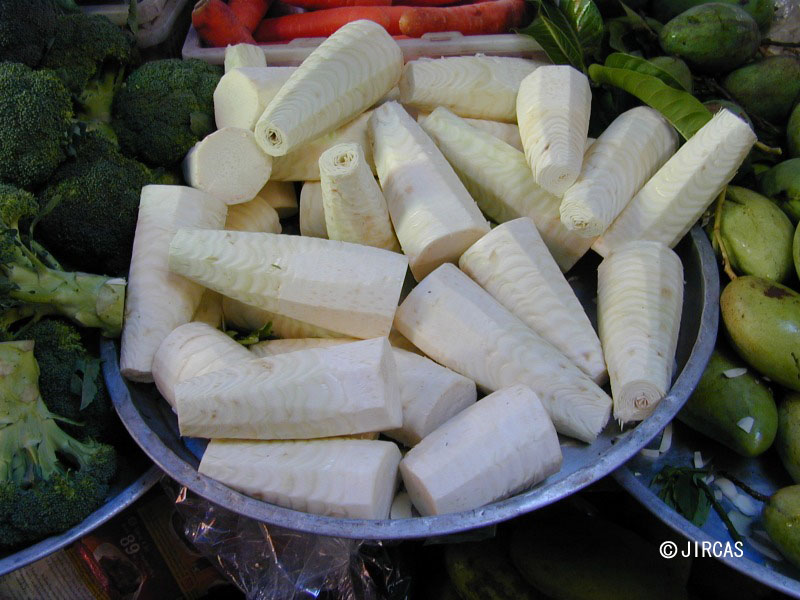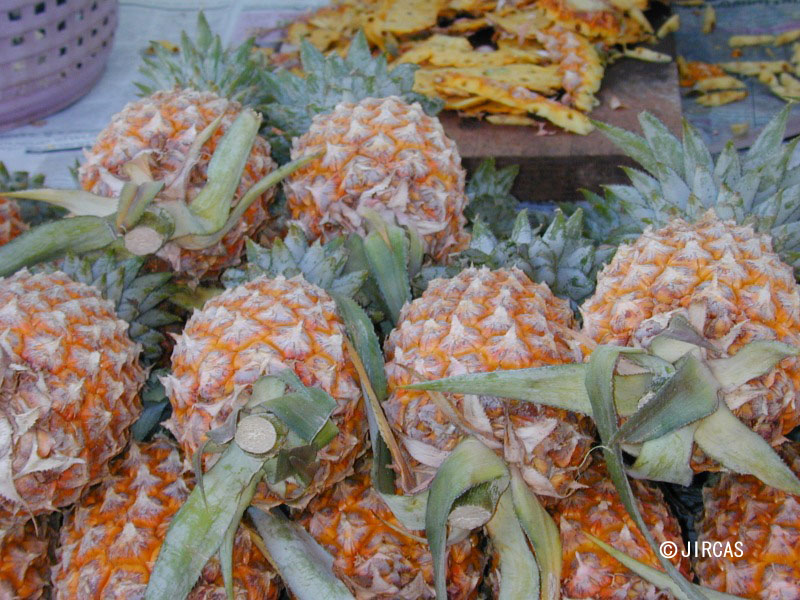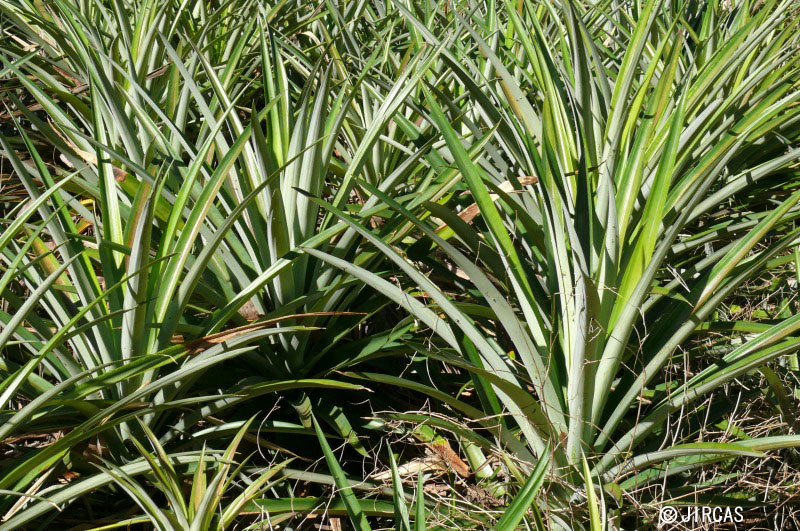Ananas comosus (L.) Merr. (Bromeliaceae)
- Scientific name
- Ananas comosus (L.) Merr.
- Family name
- Bromeliaceae
- Common name
- Pineapple (English) ; Painappuru (Japanese)
- Local name
- Sapparod
Perennial or biennial herb, c. 70 cm tall. Leaves rosette, blade sword-shaped, 75 × 7 cm or longer; margin spiny, rarely nearly entire; apex acute, pungent, fibrous, grooved on upper surface, clasping the main axis at the base, glaucous on both surfaces. Inflorescence a compact head of numerous (up to 200) sessile flowers. Flowers reddish-purple, subtended by a pointed bract enclosing 6 stamens and a narrow style with 3-branched stigma. Fruit fleshy, multiple, cylindrical, 20–30 cm long, 14–25 cm in diameter, formed by a fleshy axis of the inflorescence and the union of small, berry-like fruits; hard rind is formed by persistent sepals and floral bracts, more or less fused; terminated by a crown or rosette of short, stiff, spirally arranged leaves; flesh pale to golden yellow, usually seedless.
Grown commercially for its fruits, in dry, sandy soil and open shade. Propagated by planting slips (shoots growing on a stem immediately below the fruit) or suckers (shoots growing in leaf axils at the stem base).
The inner part of the shoot (similar to heart of palm) is consumed by indigenous people along the south-eastern coast of Thailand. The shoot is also cooked in curry dishes such as kaeng khua sapparod hoi malaeng poo.
The inner part of the shoot (similar to heart of palm) is consumed by indigenous people along the south-eastern coast of Thailand. The shoot is also cooked in curry dishes such as kaeng khua sapparod hoi malaeng poo.






